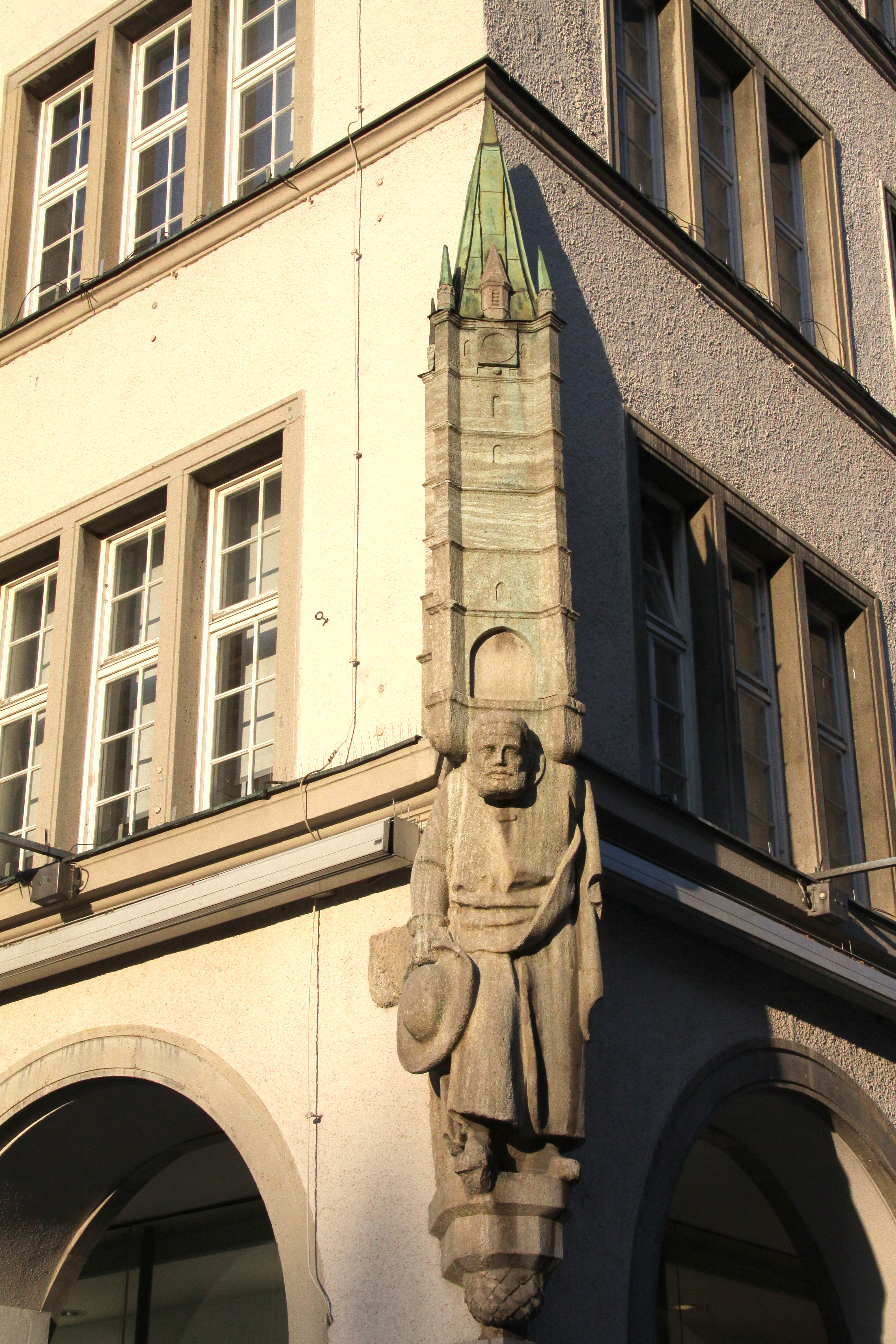Kaufingertor on:
[Wikipedia]
[Google]
[Amazon]

 The Kaufingertor was one of the five
The Kaufingertor was one of the five

 The Kaufingertor was one of the five
The Kaufingertor was one of the five city gate
A city gate is a gate which is, or was, set within a city wall. It is a type of fortified gateway.
Uses
City gates were traditionally built to provide a point of controlled access to and departure from a walled city for people, vehicles, goods ...
s built around at the end of the 12th century, as the first city walls
A defensive wall is a fortification usually used to protect a city, town or other settlement from potential aggressors. The walls can range from simple palisades or earthworks to extensive military fortifications with towers, bastions and gates ...
of medieval Munich
Munich ( ; german: München ; bar, Minga ) is the capital and most populous city of the States of Germany, German state of Bavaria. With a population of 1,558,395 inhabitants as of 31 July 2020, it is the List of cities in Germany by popu ...
. It was located in the west of the old town, approximately at the point where today's Färbergraben and Augustinerstraße meet on Kaufingerstraße
The Kaufingerstraße is one of the oldest streets in Munich and, together with the Neuhauser Straße, one of the most important shopping streets in Munich.
Location
The Kaufingerstraße borders on the west with the Marienplatz and is part of t ...
.
History
The gate was first mentioned in 1239 under the name porta superior (Upper Gate) in correspondence to the east lying city porta inferior (Lower Gate) or ''Talburgtor'' (= today's tower of theOld Town Hall
Old or OLD may refer to:
Places
*Old, Baranya, Hungary
*Old, Northamptonshire, England
*Old Street station, a railway and tube station in London (station code OLD)
*OLD, IATA code for Old Town Municipal Airport and Seaplane Base, Old Town, Mai ...
). Through these two gates, the salt road led through Munich to the west.
The gate was a simple tower with gate passage. After the construction of the outer city wall, the gate tower of the merchant family Kaufinger served as a residential tower and was named after them. The gate was demolished in 1479 and rebuilt until 1484 in late Gothic style
Gothic or Gothics may refer to:
People and languages
*Goths or Gothic people, the ethnonym of a group of East Germanic tribes
**Gothic language, an extinct East Germanic language spoken by the Goths
**Crimean Gothic, the Gothic language spoken b ...
. In 1510, the gate received a clock
A clock or a timepiece is a device used to measure and indicate time. The clock is one of the oldest human inventions, meeting the need to measure intervals of time shorter than the natural units such as the day, the lunar month and the ...
and a rich exterior frescoed fresco
Fresco (plural ''frescos'' or ''frescoes'') is a technique of mural painting executed upon freshly laid ("wet") lime plaster. Water is used as the vehicle for the dry-powder pigment to merge with the plaster, and with the setting of the plaste ...
. Because of this, the gate was mostly referred to as ''Schöner Turm'' (Beautiful Tower) from then on. In 1807 it was demolished.
Reminders
At the corner Kaufingerstraße / Augustinerstraße (Kaufingerstraße 28: ''Hirmer-Haus'') there is a sculpture
Sculpture is the branch of the visual arts that operates in three dimensions. Sculpture is the three-dimensional art work which is physically presented in the dimensions of height, width and depth. It is one of the plastic arts. Durable sc ...
of the gate tower and next to it a commemorative plaque
A commemorative plaque, or simply plaque, or in other places referred to as a historical marker, historic marker, or historic plaque, is a plate of metal, ceramic, stone, wood, or other material, typically attached to a wall, stone, or other ...
with another depiction of the tower. The inscription of the commemorative plaque states: "''Schöner Turm''. Built in 1157 in front of today's ''Hirmer-Haus'' as gate tower of the oldest city wall in Munich. Rebuilt in 1479 and decorated with frescoes that gave it the name ''Schöner Turm''. Demolished in 1807. The marking on the ground shows its former location." There is no evidence of its 1157 construction year. Munich itself was first mentioned in documents in 1158, and probably later surrounded by a city wall. The reference to the "marking on the ground" refers to the former floor plan of the gate tower which is marked in the pavement of the pedestrian zone.
References
{{coord, 48.13731, N, 11.57297, E, display=title, format=dms Towers in Germany Clock towers